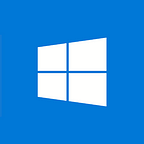Games without winners? Developer Adriaan De Jongh pushes past traditional play.
Winning is not typically the end game in developer Adriaan De Jongh’s games. Instead, he envelops users in deeply social experiences that push traditional player boundaries.
He’s also crossing international boundaries, traveling the world for #DevQuest to discover what’s driving other indies when making their games.
“My games have a very clear vision of the player experience,” he says. “I have a way of dragging people into them and then keeping them there, as opposed to forcing them to get to the end. I think of my games as a platform, not necessarily a finite folder inside the device.”
Seeing two people accidentally touch each other’s hands when playing on a big Surface screen was inspiration for his first game Fingle.
He noticed they were taken aback by this unexpected, perhaps even awkward, connection and imagined a game in which fingers brushed against each other, adding tension and a bit of fun frisson to the play.
Fingle encourages exactly that kind of behavior, allowing users to play a sort of mini-Twister with their hands on the screen.
“I was lucky to have found this game idea. The fact that it took off so much is, again, luck,” Adriaan says. But his success can also be credited with his ability to look at games in a different way.
Fingle went to the top of the app stores and gained him a global following. From there, he funded a studio that has since brought to life additional games that emphasize how human/device contact can open up new experiences.
Alternative interactions
Adriaan, calls Utrecht, Netherlands home, and he started programming at 18. When studying interaction design in college, he learned about alternative interaction methods and applied that to Fingle, his graduation project.
Fingle is devilishly simple. A series of dots appear on the screen, and two users touch them, making various patterns with their fingers. The game forces a unique sort of intimacy between players, allowing them to touch and work together in ways that aren’t common in mobile games.
For his next game, he thought about what else two people could do on the same screen. In Friendstrap, each player positions a thumb on the screen when prompted by a placeholder with the goal of holding on longer than the opponent. This sounds much easier than it really is.
While holding the phone, random questions appear — some benign, some provocative — to incite conversation between players and possibly distract them from keeping a grip. The first player to let go loses.
“While playtesting Friendstrap,” Adriaan explains, “some people pulled the phone out of the other person’s hand, but I didn’t want it to be an aggressive game. So, I put something in the game that inverts the win condition. If one player pulls out the device out of another player’s hands really abruptly, they will actually lose.”
Action then turned into the more playful movements and social interactions Adriaan seeks to encourage. “They were like hugs.”
Next, intricate drawings of miniature worlds — “you want to put your face in” — inspired his game Hidden Folks. “It was the stories we could tell, those small tiny stories, that had the sort of light playfulness that really allies with the kinds of things I want to make,” says Adriaan. “There’s no point of scores. It’s just about enjoying the scenery.”
Changing the game
He hopes that more developers start thinking about delivering new game synergies versus just focusing on updating familiar mechanics.
“We need more developers with different experiences in mind to come up with new kinds of interactions [among players] and new ways of interacting between devices.,” Adriaan says. “This is a paradigm shift for many game designers who think in conventional terms.”
In search of such indie innovation, Adriaan is the host of our #DevQuest series. Traveling the world, he’s been moved by game designers in every city he’s visited.
He highlights Amanita Design for its ability to work in multiple teams while still maintaining a coherent style and extremely high quality; Compulsion Games for managing growth from six to 40 people in two years; and Night School Studio for applying the founders’ backgrounds in film to their games.
“Perhaps my biggest takeaway from the trip,” Adriaan says, “is that while each indie has a focus on completely different things (team, design or community … you name it), they all find a way to make it work and pay for food and rent.
This is incredibly inspiring and a reminder that, as a game developer, you should always try to do the crazy, weird, unexpected thing you are truly passionate about. I’ve been directly inspired to change my own future plans; to do the scary, wild things as opposed to the safe things.”
Take a look at Adriaan’s encounters on the road for #DevQuest.
Still want more? Learn all about game development on Windows 10 right here.
